Guarda – Accessible Tour
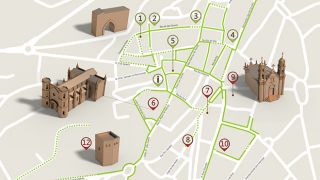
In Guarda, the highest city of Portugal, the air you breathe is healthy and light, typical of the mountain range where it is located - Serra da Estrela, the largest protected area in Portugal.
It is also from this serra that the granite which predominates in the buildings of the historic centre and on the road surfaces, whose good state of repair mean that getting around is stable and comfortable. However, since this is a mountainous area, the natural slope of the terrain can create difficulties for moving around in some places.
Download the map and follow the tour
We propose you start your visit in the important centre that dates back to the Middle Ages, when Guarda was completely surrounded by walls, interrupted at strategic places by entrances which gave access to the main roads of the region. Examples of this are the entrances Porta da Erva (4), also known as the Porta da Estrela, and the Porta d'El Rei (1) an ogive arch in Gothic style. In this area, near the Rua and Largo de São Vicente is the old Judiaria (Jewish Quarter) (2), a core of narrow streets with houses that retain their original architecture and where you can find symbols engraved in the stone. Another place to visit is the Igreja de São Vicente (Church of São Vicente) (3), which dates from the 13th century, but was rebuilt in the Baroque period. Its spacious interior can be entered through a level entrance on the right-hand side.
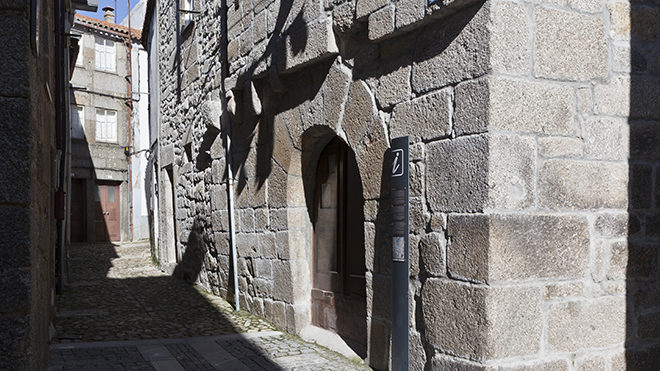
Guarda – Rua do Amparo © Pedro Sousa|Amatar
The Praça Luís de Camões (5), also known as the Old Square is the city's main public area. Among the buildings that surround it are stately homes that belonged to wealthy families, such as the Solar dos Póvoas, the former Town Hall with arcades on the ground floor, and especially the imposing Catedral (cathedral) (6). The interior of this church-fortress in the Gothic style is fully accessible. You can admire a magnificent altarpiece in Ançã stone, a remarkable work of the late Renaissance.
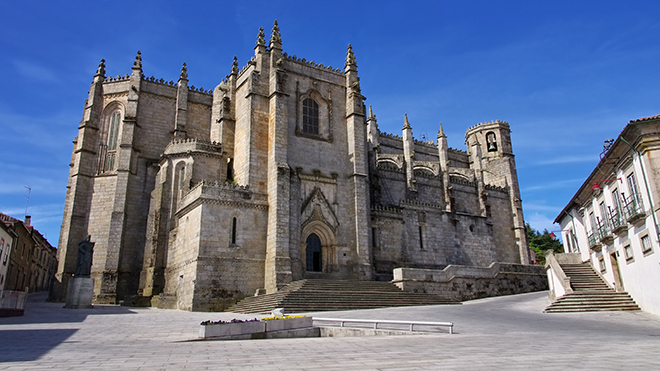
Guarda – Catedral © Shutterstock - Liane M
Nearby, next to one of the ancient gates in the city walls, stands the Torre de Ferreiros (Ferreiros Tower) (7) and, a little further down we find the little Capela de São Pedro (Chapel of São Pedro) (8), but the stairs at the entrance hinder access to a narrow space inside. This area has a more uneven surface and causes more vibrations while getting around.
The route continues through Largo João de Almeida, where the pillory stands, and the Igreja da Misericórdia (Church of the Misericórdia) (9). It is built in Baroque style and is outside the medieval walls. Access to its spacious interior is hampered by some steps at the entrance, an obstacle that you will also find in the Museu da Guarda (Guarda Museum) (10). Housed in the former Bishop’s Palace, this museum has appealing collections of architecture, numismatics, painting and sculpture. But independent access is only possible on the ground floor, since you have to climb stairs to reach the upper floor.
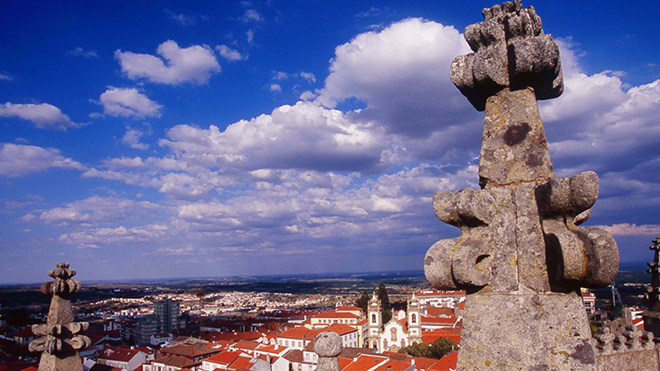
Guarda – Catedral © ARPT Centro de Portugal
If you want to pause for a while, we suggest the Jardim Municipal José de Lemos (José de Lemos Municipal Gardens) (11), a very pleasant green space. Then you can complete this tour in the Torre de Menagem (the Keep) (12), which stands at an altitude of 1056 metres. Access presents some difficulties because it is on a sloping street and there are steps at the entrance. This isolated tower was part of the old Alcazaba/citadel of the castle and has a reception centre, in a building that is fully accessible. Here you will find an exhibition of archaeological finds and an information centre relating to the main points of cultural interest in the municipality, where you can learn more about the places you have visited.


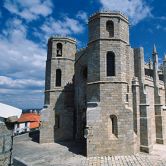
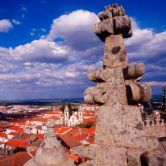
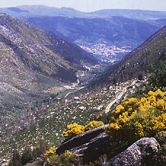


 Explore
Explore 
 Remember and Share
Remember and Share 


